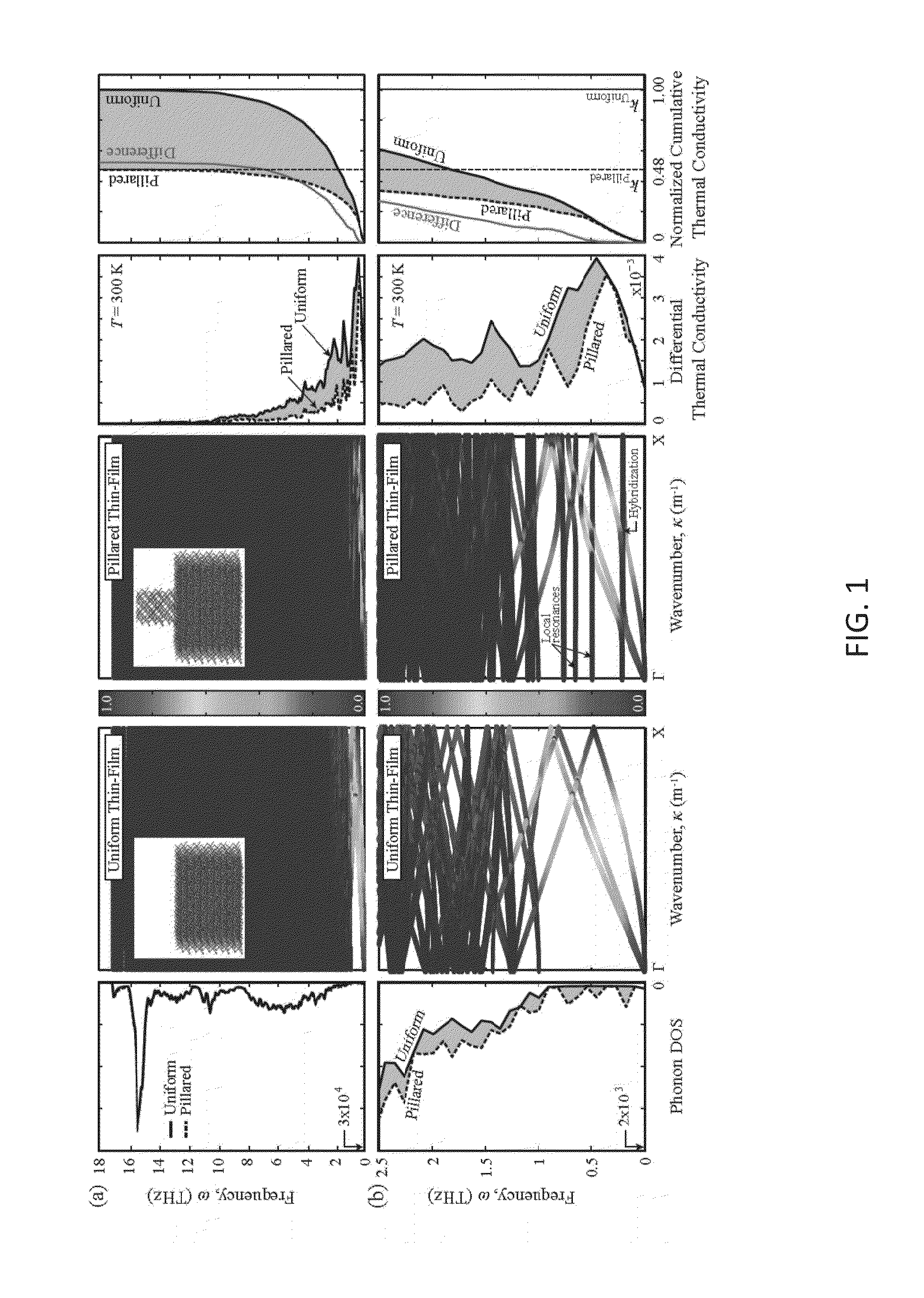Nanophononic metamaterials
a technology of phononic metamaterials and nano-phononic materials, applied in the direction of nanotechnology, instruments, material nanotechnology, etc., can solve the problems of weakening the current created, limiting the use of thermoelectric materials, and limiting the application of thermoelectric devices to niche or small-scale applications, so as to reduce the thermal conductivity of the base material
- Summary
- Abstract
- Description
- Claims
- Application Information
AI Technical Summary
Benefits of technology
Problems solved by technology
Method used
Image
Examples
Embodiment Construction
[0031]A phononic metamaterial at the nanoscale, also described as a nanophononic metamaterial (NPM) herein, is provided. In some implementations, a NPM can be used to significantly reduce thermal conductivity in a nanostructured semiconducting material and, in other implementations, do so without affecting (or at least without significantly affecting) other important factors for thermoelectric energy conversion, such as the electrical conductivity.
[0032]Heat flow is carried by atomic waves (phonons) with a wide range of frequencies. An NPM contains miniature oscillators / resonators (these two terms are used interchangeably herein) that exchange energy with phonons and alter their propagation characteristics. When the frequency of a passing phonon matches a mode of an oscillator of an NPM, a coupling / hybridization / interaction occurs between a vibration mode of the oscillator and the phonon. This leads to a reduction in the group velocity of the interacting phonon, which, in turn, caus...
PUM
 Login to View More
Login to View More Abstract
Description
Claims
Application Information
 Login to View More
Login to View More - R&D
- Intellectual Property
- Life Sciences
- Materials
- Tech Scout
- Unparalleled Data Quality
- Higher Quality Content
- 60% Fewer Hallucinations
Browse by: Latest US Patents, China's latest patents, Technical Efficacy Thesaurus, Application Domain, Technology Topic, Popular Technical Reports.
© 2025 PatSnap. All rights reserved.Legal|Privacy policy|Modern Slavery Act Transparency Statement|Sitemap|About US| Contact US: help@patsnap.com



